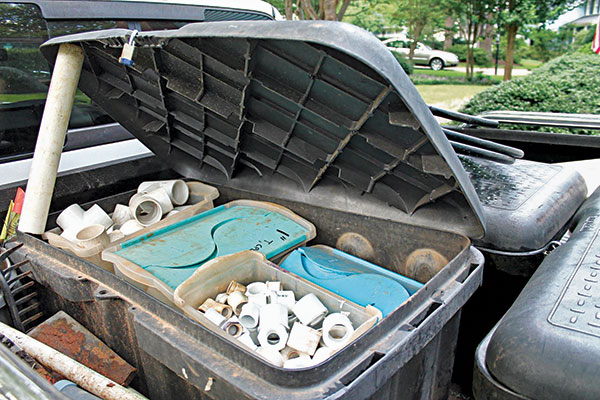You might call Michael Haynes both a student of and a teacher for the irrigation industry. He and a partner built one company—All About Irrigation in Greenville, S.C.—before selling it in 2012. Soon after, he started up another, All Green Irrigation in Columbia, S.C. He’s been operating it as a one-man show, and he’s set to hire a few technicians this year.
Haynes also runs the website Pro Irrigation Training, and has shared his craft with 2,600 students from all over the world over the last four years.
“I do it because these guys just need help,” Haynes says of his target market—irrigation maintenance professionals. “I’ve been trying to get some of my knowledge out because there’s nothing (training-wise) in the irrigation market that can get someone off the ground.”
Here, he shares his truck setup, which he says is maximized for efficiency and profitability.
The key? You’re only making money when you’re serving a customer—not standing in an irrigation supply house.
“I see other companies’ trucks with two milk crates with $20 worth of parts in them,” Haynes says. “I wonder how they get anything done.”
His says his average job is $190 per maintenance visit, which includes about five or six heads and some drip parts. If the guys with the milk crates are using similar parts at every stop, he figures they must be going to the distributor every day—a practice that doesn’t translate to profits.
“I’ve seen different types of homemade things work out well,” he says, referring to vans with shelving, compartments and other rigs. “In my opinion, it’s just a matter of how organized you are about keeping your inventory filled.”
Bed Time
“I have a Dodge Ram 2500, but I’ve seen guys even in smaller pickup trucks be able to organize efficiently,” Haynes says. “I don’t have a trailer. I know guys like to carry lots of stuff on them, but they’re a high theft target. And the wear and tear on the vehicle over time is something to consider.”
Tote-ally Efficiently
“I have three large lockable totes,” he says. “One is filled with tools. One is filled with PVC—99 percent of the systems here are constructed with PVC. The third one is just valves, poly parts, spare stuff, risers and expandable couplings. All my drip parts are in a tote inside of there. I keep a pretty extensive selection of drip and microsprays.”
A look back
“Inside the cab of my truck I keep the heads, timers, nozzles in a tackle box, pump parts and a wire tracker up underneath the seat,” Haynes says. “There’s also safety gear, bug spray, sunscreen—all the things a contractor needs.”
Check it twice
“I keep a week’s worth of inventory or more. If you have to make a stop at the parts house, know what you need before you get there,” he says. “I’m kind of old school. I keep all my inventory on paper. It’s printed from a document on my computer, which I update, but I keep physical lists on my truck. I put check marks on parts I used on that stop.”
photos: All Green Irrigation






